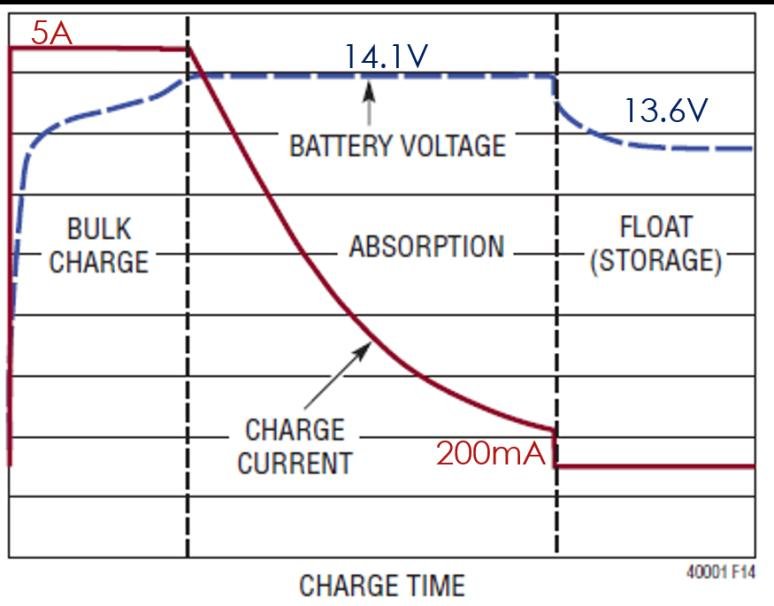I have the MPPT 100/20 48V Solar Charger up and running, charging a 48V Li-Ion battery pack.
The OCV for Panasonic GA cells (13 in series) is going from 42,3V (SOC = 7,5%) up to 53,9V (SOC = 97,5%); This is the working range.
Now I am trying to find the best settings. Could you please help me with that!
How should I set
- absorption voltage
- float voltage
- equalization voltage (really needed for Li-Ion?)
- Re-Bulk voltage offset (what is it for?)
- Absorption duration
?
Thank you very much in advance!
Regards, Flo


 So in my understanding, setting the float current to a lower values (the nominal voltage) would probably stop the current flowing in (assuming that diodes would block the current flowing back from the battery into the charger !), and then become active again when the battery reaches its nominal voltage, meaning 50-70% of charge I suppose? But what's the point of charging the batteries fully to let them discharge subsequently?
So in my understanding, setting the float current to a lower values (the nominal voltage) would probably stop the current flowing in (assuming that diodes would block the current flowing back from the battery into the charger !), and then become active again when the battery reaches its nominal voltage, meaning 50-70% of charge I suppose? But what's the point of charging the batteries fully to let them discharge subsequently?